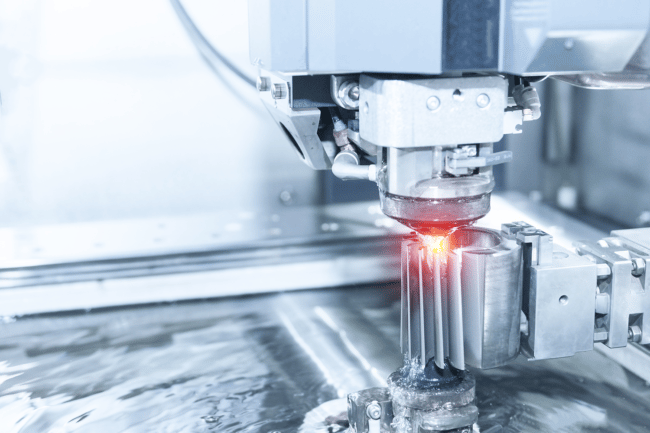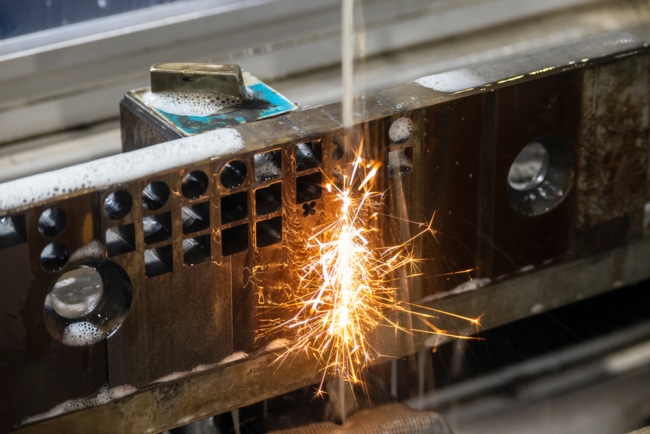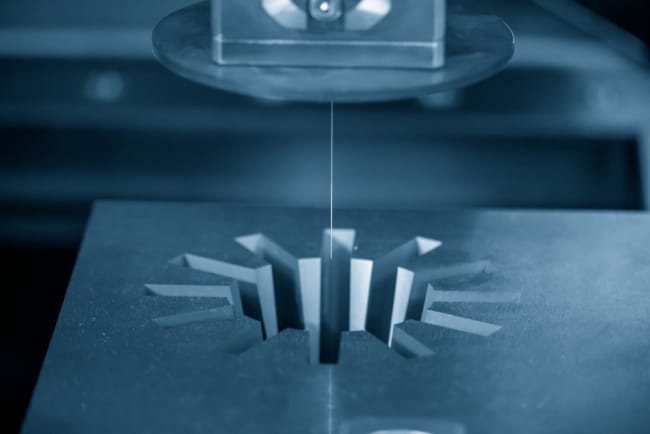Electro discharge machining (EDM) has three different forms: Wire erosion, spark erosion, sometimes referred to as die sinking, and fast hole burning. This article will concentrate on the first of these processes - wire erosion, and later articles will cover the other two forms.
What is Wire Erosion?
Wire erosion takes an idea first developed for industrial use by two scientists in the then Soviet Union - who in turn owed their theoretical base to Joseph Priestly, a man once driven out of Birmingham during the Priestley Riots, but let’s not dwell on past indiscretions of a noble tribe exemplified in modern popular culture by the Shelby family.
To contemporary industrial manufacturers wire erosion takes a relatively simple concept of running an electrical current through a brass wire to erode a path through a material that must be able to conduct electricity. In most cases this is some form of metal or alloy, but graphite is another conductive material that is also suitable for wire eroding. Whilst it has now become a common process in the manufacturing sector it wasn’t too far back in manufacturing history when it would have been considered a revolutionary idea, much in the way that additive manufacturing has come to be viewed.
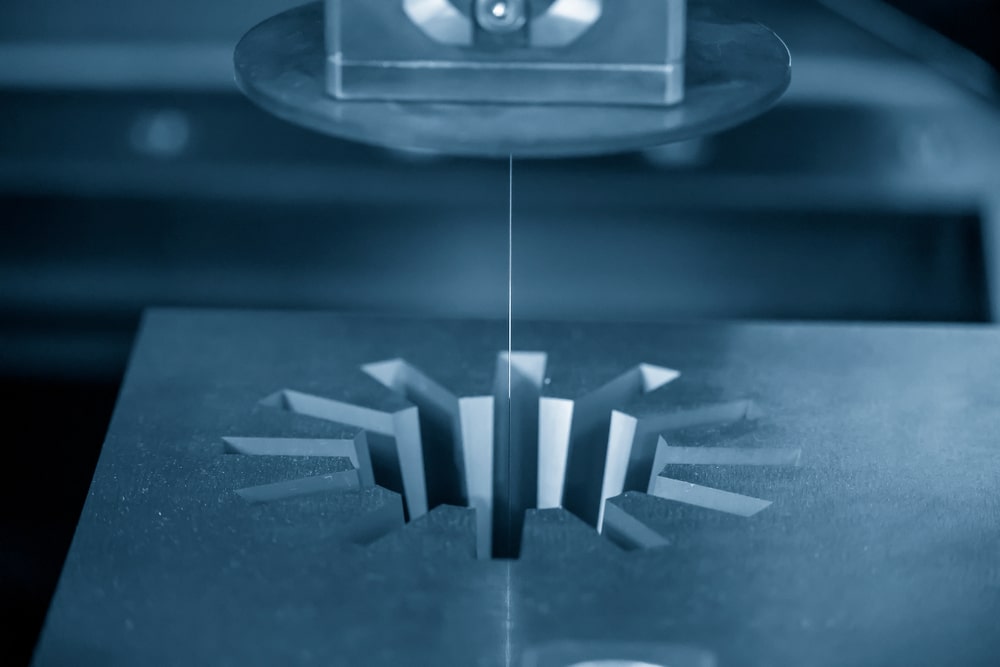
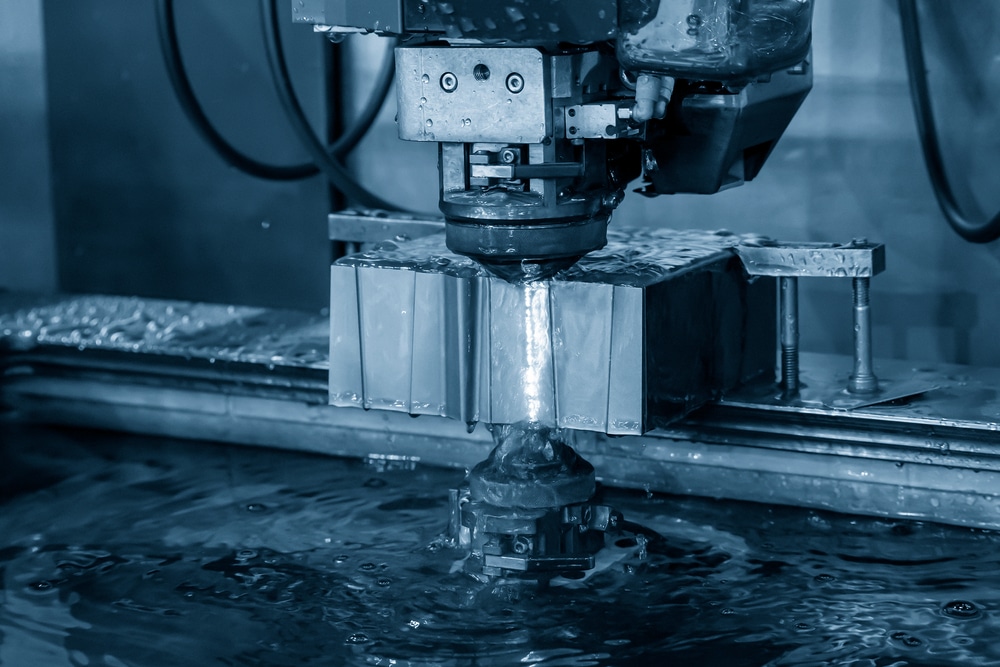
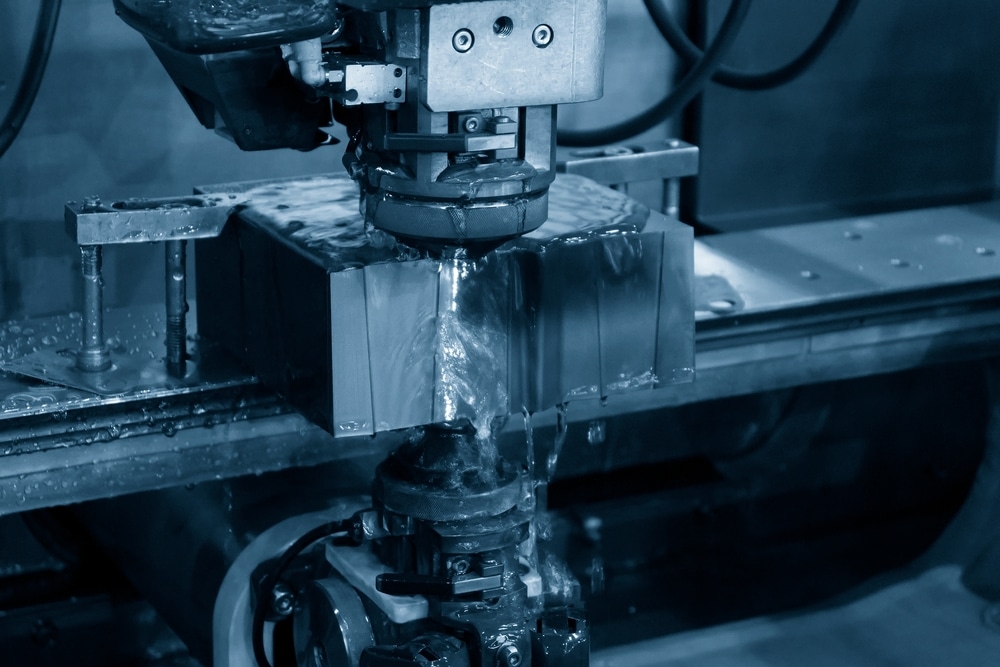
EDM Wire Cutting
Wire erosion allows us to produce complex two-dimensional (2D), four-axis (X, Y, U and V. The X refers to the horizontal axis, the Y to the vertical, U to moving one part in the X and V is the equivalent in the Y. This allows the process to cut a range of shapes rather than simple parallel lines) parts which previously would have required a range of separate processes which would have all been highly labour intensive. For example, wire erosion can be used as an alternative to milling, grinding and turning. It can produce parts to ± 5 microns (µ) which is pretty accurate given that a human hair is approximately 70 microns, give or take 20 microns.
Submersion vs Coaxial Flushing
Wire erosion itself can take two forms. The part being eroded can be submerged in a fluid, in most cases deionised water, or left exposed using a technique called coaxial flushing which is little more than ‘splashy’ cutting where the deionised water splashes over the part being eroded. In truth, the most common form of wire erosion is the submerged version. Submerging the part being wire eroded increases stability, that is the wire passing through the part is less likely to break, accuracy - the ± 5 micros (µ) - and surface finish or what is sometimes called the recast layer or how the current has affected the surface of the material.
Submerging anything in fluid requires something to hold the fluid, for example, a tank. The tank forms an integral part of any wire erosion machine and in doing so presents an issue. All tanks, irrespective of their dimensions, are constrained. Think of a swimming pool. They can be all shapes and sizes but they have a defined limit. Fortunately we don’t want to introduce an electrical current into a swimming pool which nicely takes us to another factor to consider when wire eroding. If the tank is too large it will dissipate the strength of the current. Increase the volume of the tank and you’ll need to increase the power of the current.
What the tank/power ratio means is that wire erosion tends to be used for small to medium-sized work rather than very large jobs. As the workpiece has to sit on a table within the machine to create a circuit the table size determines the maximum volume of the workpiece. The range of parts that can be processed, however, is infinite in the potential complexities.
EDM Wire Erosion Process
The process of wire erosion requires a wire to pass from the top of the material being wire eroded via a wire start hole (WSH), which is often created by using another variant of EDM, fast hole burning, to a point below the workpiece. The point at the top of the workpiece is referred to as the ‘top head’ and the point below the workpiece the ‘bottom head’.
The wire, which is housed on a spool looking like a large cotton reel traverses through the machine via a system of pulleys to the top head. It is then fed through the WSH to the bottom head which feeds the used wire clear of the workpiece via the rear of the machine.
The wire is a continuous feed and the reels hold between six and twenty kilos of wire. The size of the wire spool determines where it is loaded on a machine. The lighter-weight reels sit on the front of the machine whilst the heavier spools are fed from the rear of the machine.
Most, but not all machines, can take either size of wire reel. The determining factor in choosing which reel to use is the time the machine will take to erode the workpiece. This is a given based on a range of factors which include the type of material, volume, angle of cuts required, surface finish and basic machine maintenance.
The machines require the deionised water to pass through filters that have a prescribed life expectancy. If the filters are not changed at the appropriate point the potential cutting speed may not be achieved. In addition, workpieces can sometimes ‘brass up’. This is the residue from the brass wire clogging the cutting path of the wire causing the machine sensors to perceive a problem.
Other potential problems include the conductivity piece (informally referred to as the pins) in the top and bottom heads becoming worn causing the wire to break. In short, appropriate maintenance is essential for optimum outcomes using wire erosion.
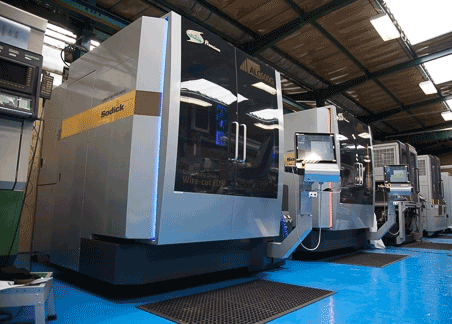
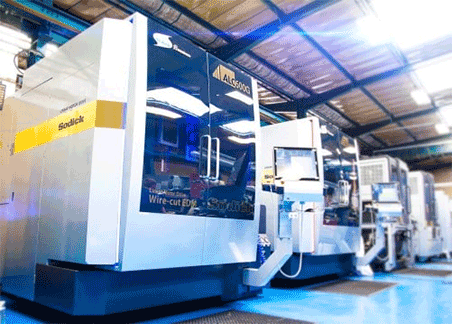
A&M Wire Erosion Machines
We wire erode parts for a diverse range of industries including automotive, aerospace, marine, medical, nuclear, scientific research, oil and gas exploration, jewellery manufacturing, food production and other industrial processes
At A&M EDM we have a range of wire erosion machines (or wire edm machines) all manufactured by a company called Sodick which has allowed us to provide solutions to complex engineering problems for our customers.
This is helped by one of the inputs into the process I have so far failed to mention: our staff. Using the latest computer software to programme Sodick’s machines ensures that EDM can meet the exacting requirements necessary in precision engineering.
Conclusion
Wire erosion is a vital process in the manufacturing sector that allows for the production of complex parts with high precision and accuracy. It has revolutionized the way parts are produced, eliminating the need for multiple labor-intensive processes.
Wire erosion can be done through submersion or coaxial flushing, with submersion being the more common method due to its benefits of stability, accuracy, and surface finish. The size of the tank and power ratio limits wire erosion to small to medium-sized workpieces. Proper maintenance and care are essential for optimal outcomes using wire erosion machines.
At A&M EDM, we utilize Sodick wire erosion machines and our skilled staff to provide solutions to engineering challenges across various industries.
Related Content
Need more information?
To see how A&M could support your next complex manufacturing project – simply call us, or use the form below.
